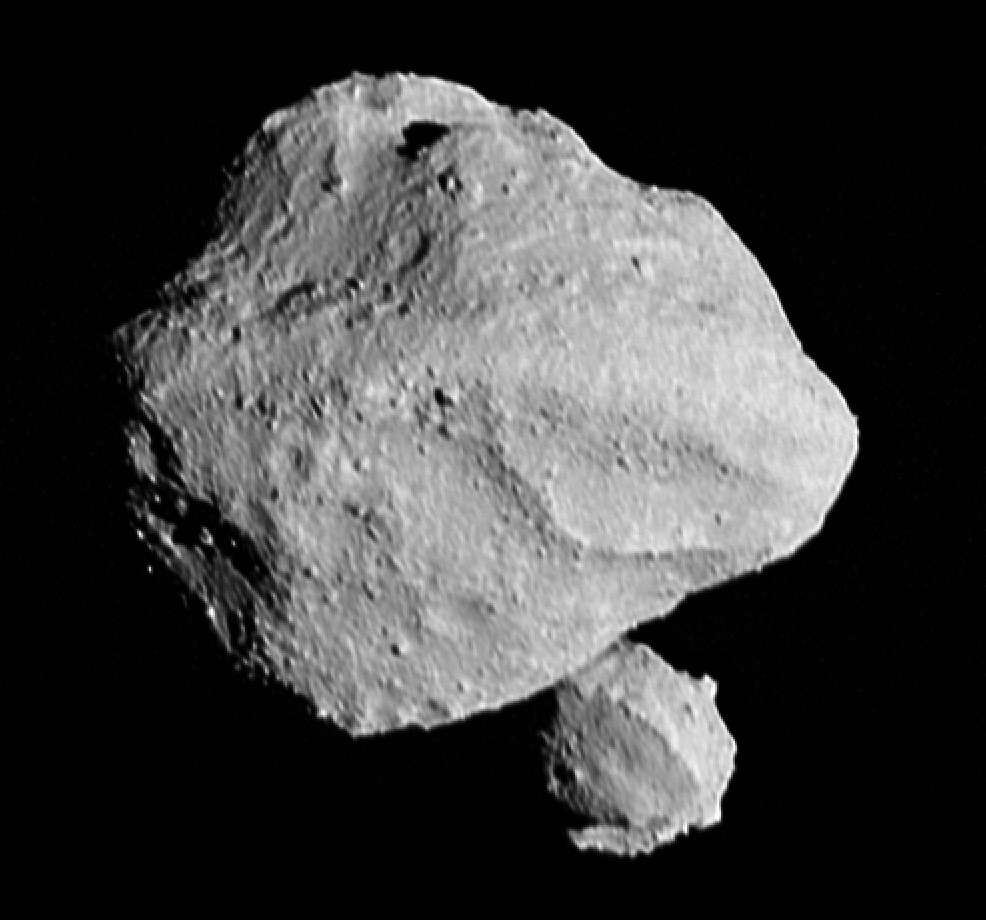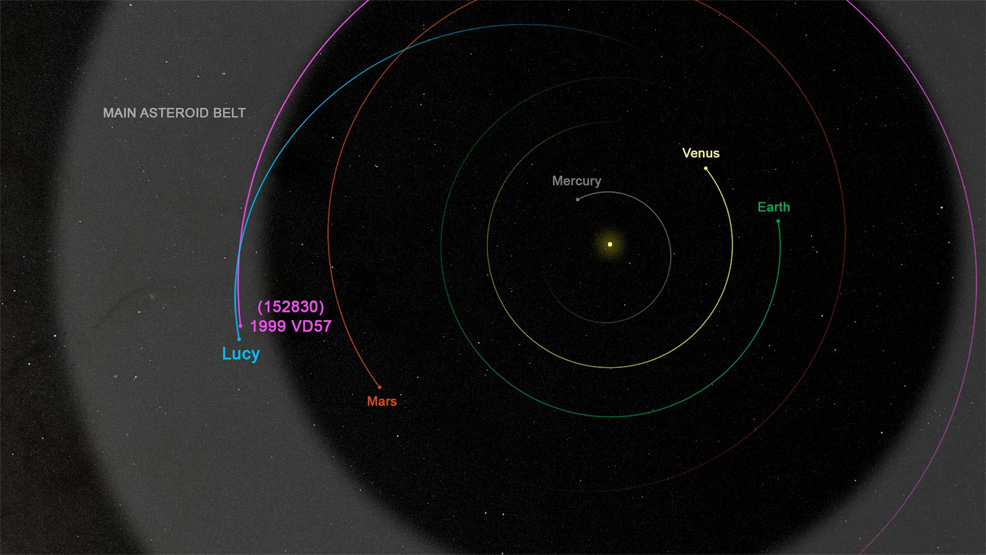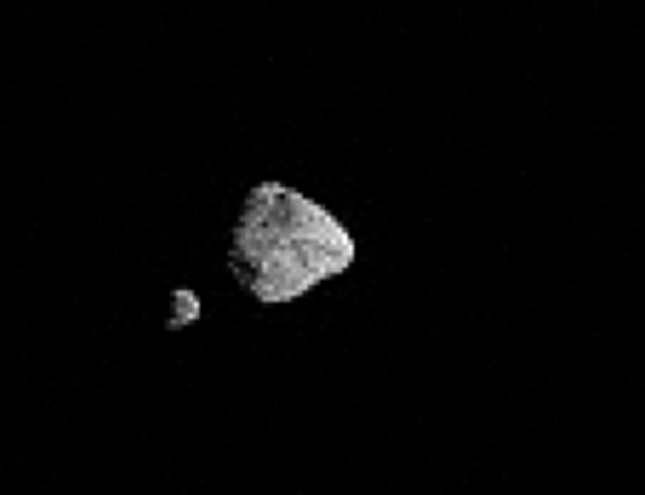
6th November 2023 NASA probe finds new asteroid during flyby Dinkinesh, previously thought to be a single asteroid, is revealed by NASA's Lucy probe to in fact be a binary pair.
Dinkinesh, a main-belt asteroid with an orbital period of 3.2 years, was discovered on 4th November 1999 by the Lincoln Near-Earth Asteroid Research (LINEAR) sky survey at Socorro, New Mexico. Less than two weeks after being observed, astronomers lost track of the object and it went unrecognised for several years. Additional sightings occurred in the mid-2000s, helping to re-establish its position and greatly reduce the uncertainties of its orbit. On 16th October 2021, NASA launched the Lucy probe on a 12-year mission to Jupiter's Trojan asteroids. Dinkinesh would become the first and by far the smallest flyby target of its journey, as well as the smallest main-belt asteroid ever explored by a spacecraft, with a mean diameter of 790 m (2,591 ft). Lucy took its first images of Dinkinesh on 3rd September 2023, when the asteroid was 23 million km (14 million mi) away from the spacecraft, appearing as just a few pixels. It made its closest approach on 1st November, hurtling past at 10,000 mph (4.5 km/s) and revealing the surface in detail for the first time, with a resolution as fine as 2 metres per pixel. During this flyby, Lucy discovered that Dinkinesh has a natural satellite, measuring 220 m (720 ft) in diameter. Together, Dinkinesh and its tiny moon form a binary asteroid system. This rare orbital arrangement is only the second binary main-belt pair to be visited by a spacecraft, after 243 Ida by Galileo in 1993.
"Dinkinesh really did live up to its name – this is marvellous," said Hal Levison, referring to the meaning of Dinkinesh in the Amharic language, "marvellous." Levison is a principal investigator from the Boulder, Colorado branch of the Southwest Research Institute, which is working on five major missions for NASA. "When Lucy was originally selected for flight, we planned to fly by seven asteroids. With the addition of Dinkinesh, two Trojan moons, and now this new satellite, we've turned it up to 11." In the weeks prior to this encounter, the Lucy team had wondered if Dinkinesh might be a binary system, given how the probe's instruments showed the asteroid's brightness changing with time. These close-range images removed all doubt. This milestone in the journey primarily served as an in-flight test of the spacecraft, specifically focusing on testing the system that allows Lucy to autonomously track an asteroid as it flies past at high speed, referred to as the terminal tracking system. "This is an awesome series of images. They indicate that the terminal tracking system worked as intended, even when the universe presented us with a more difficult target than we expected," said Tom Kennedy, a guidance and navigation engineer at Lockheed Martin in Littleton, Colorado. "It's one thing to simulate, test, and practice. It's another thing entirely to see it actually happen." "We knew this was going to be the smallest main-belt asteroid ever seen up close," said Keith Noll, Lucy project scientist from NASA's Goddard Space Flight Center in Greenbelt, Maryland. "The fact that it is two makes it even more exciting. In some ways, these asteroids look similar to the near-Earth asteroid binary Didymos and Dimorphos that DART saw, but there are some really interesting differences that we will be investigating." The downlink for the remaining data from this encounter is expected to be complete in the next day or two. The team will then use this data to evaluate the spacecraft's behaviour during the visit and to prepare for its next close-up look at an asteroid, the main-belt asteroid Donaldjohanson, in 2025. Lucy will then be well-prepared to encounter the mission's main targets, the much larger Trojan asteroids, starting in 2027. The mission is expected to conclude in March 2033.
Comments »
If you enjoyed this article, please consider sharing it:
|









